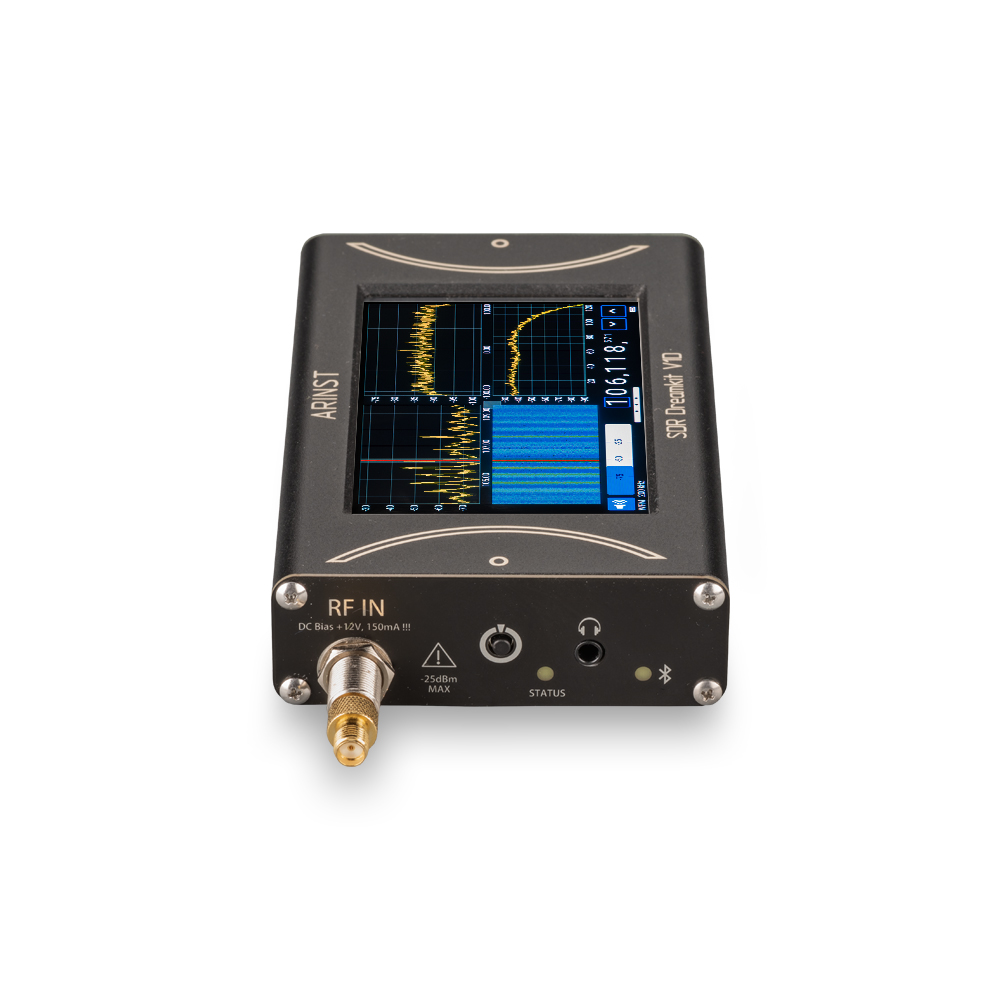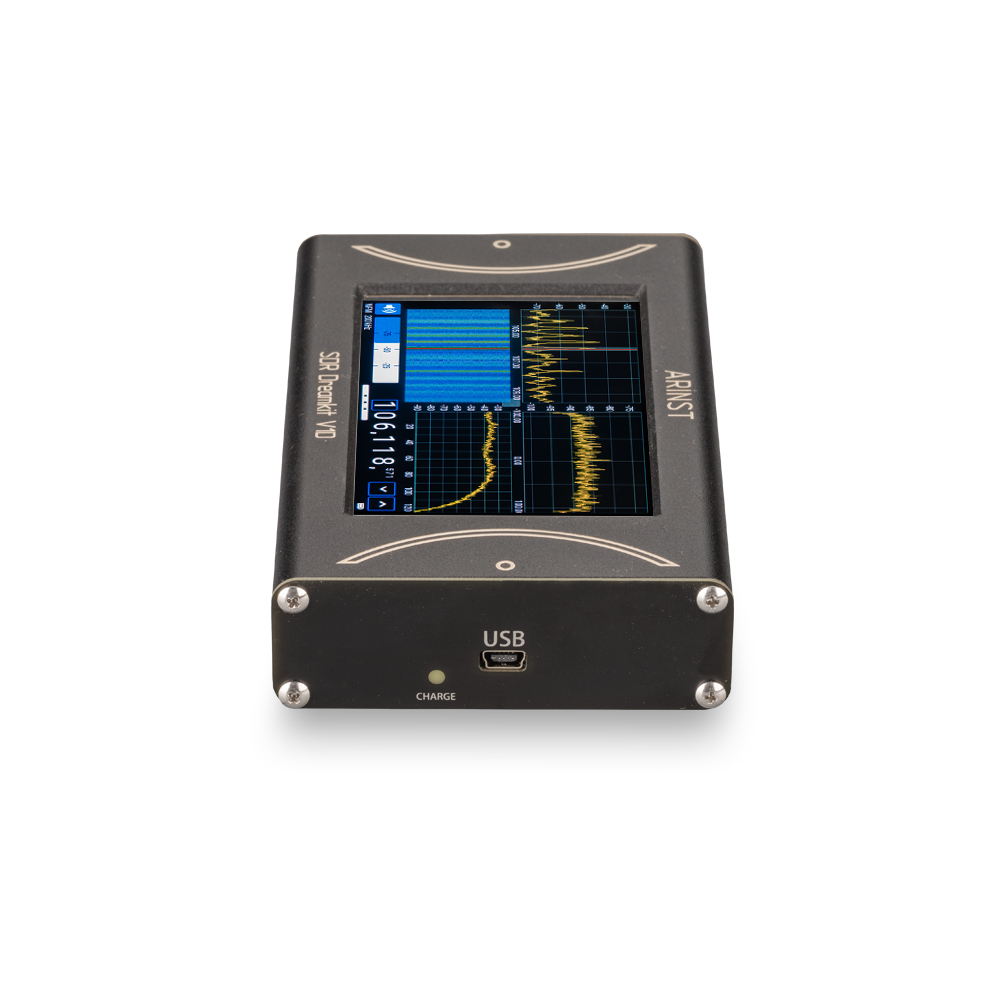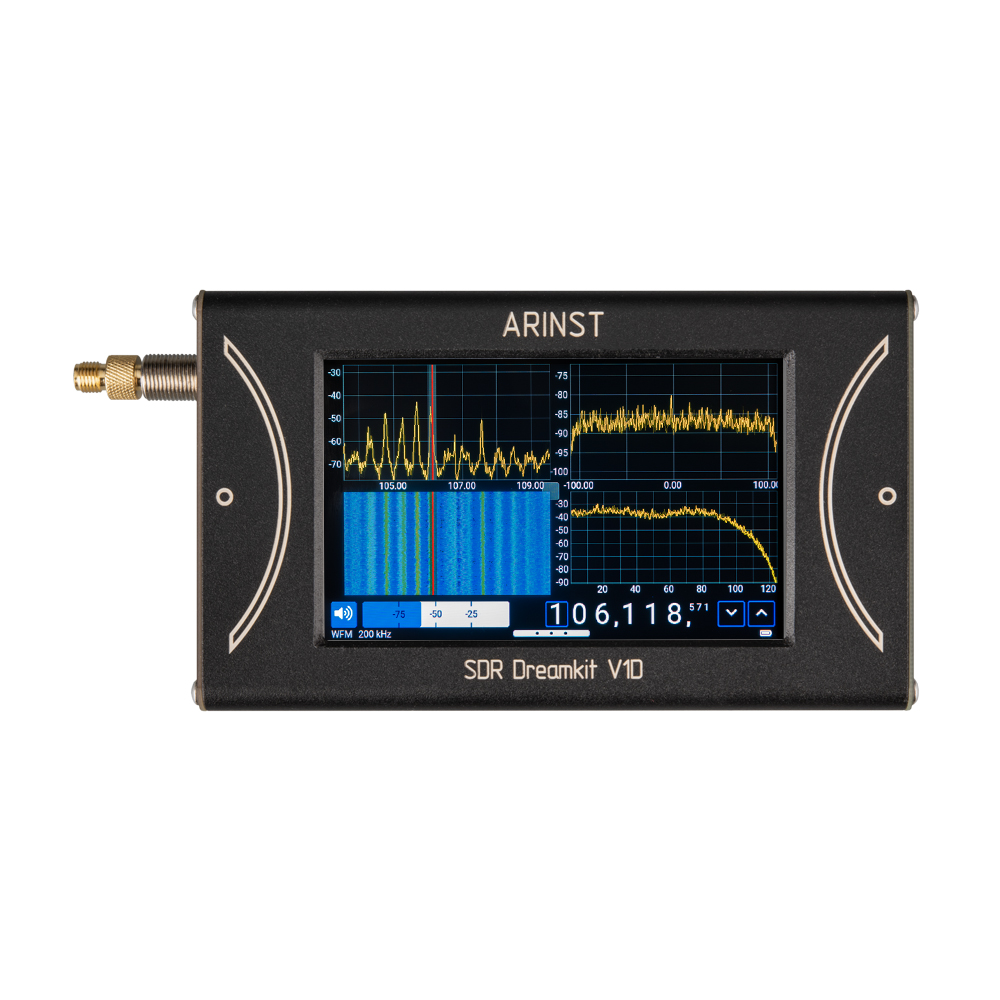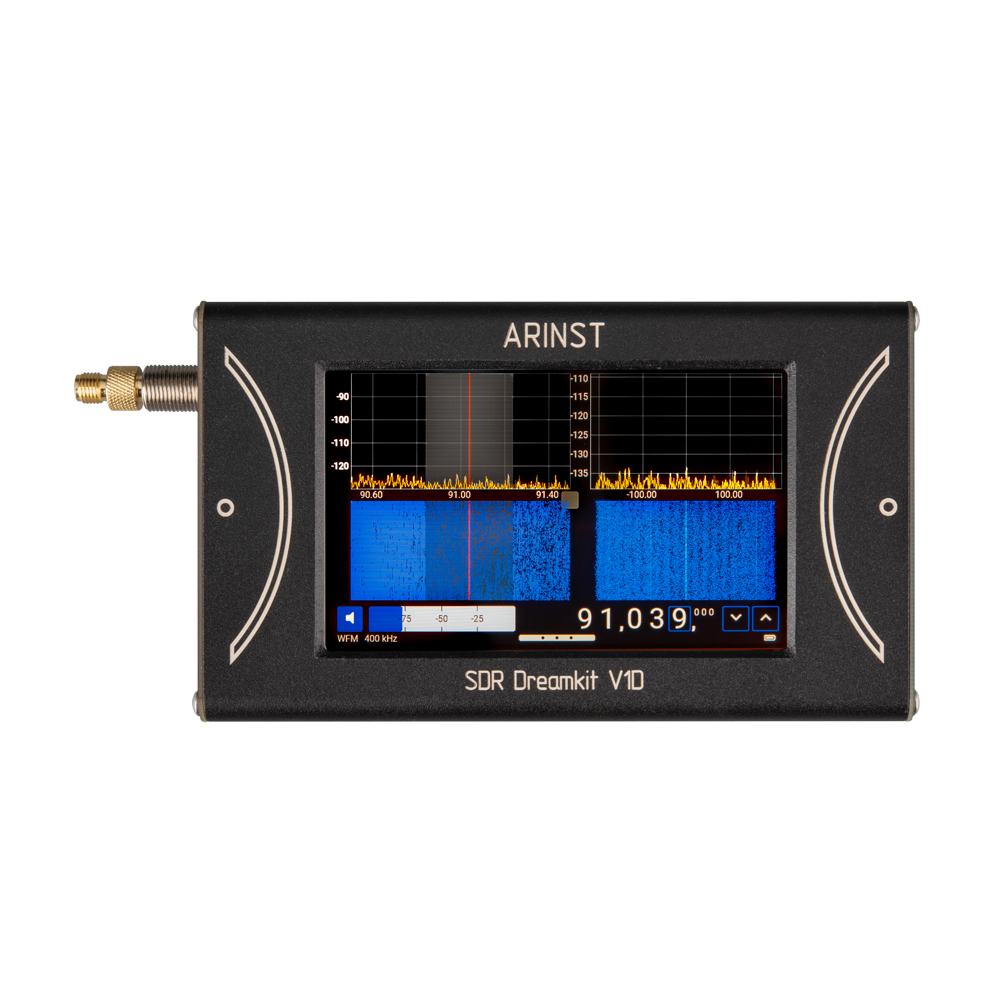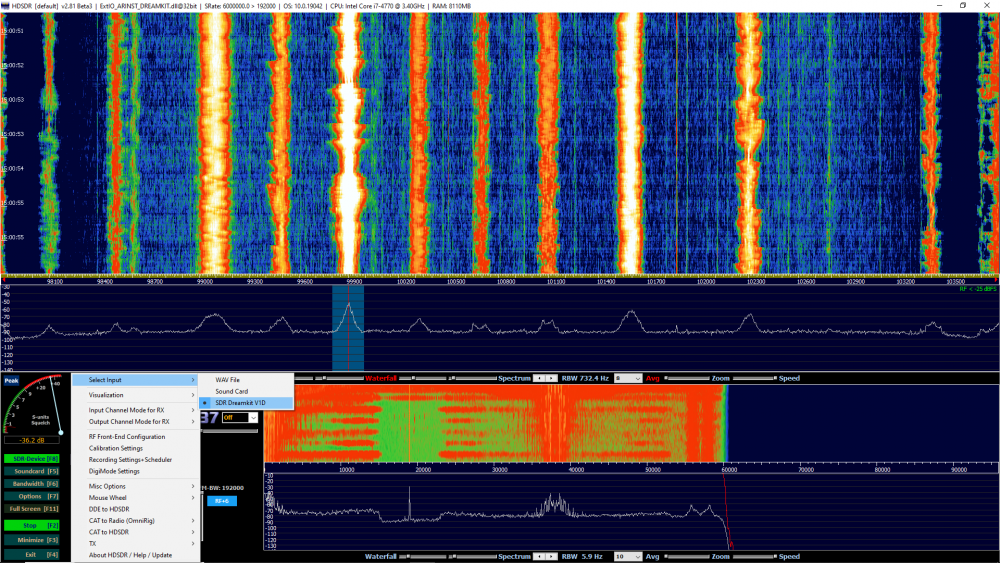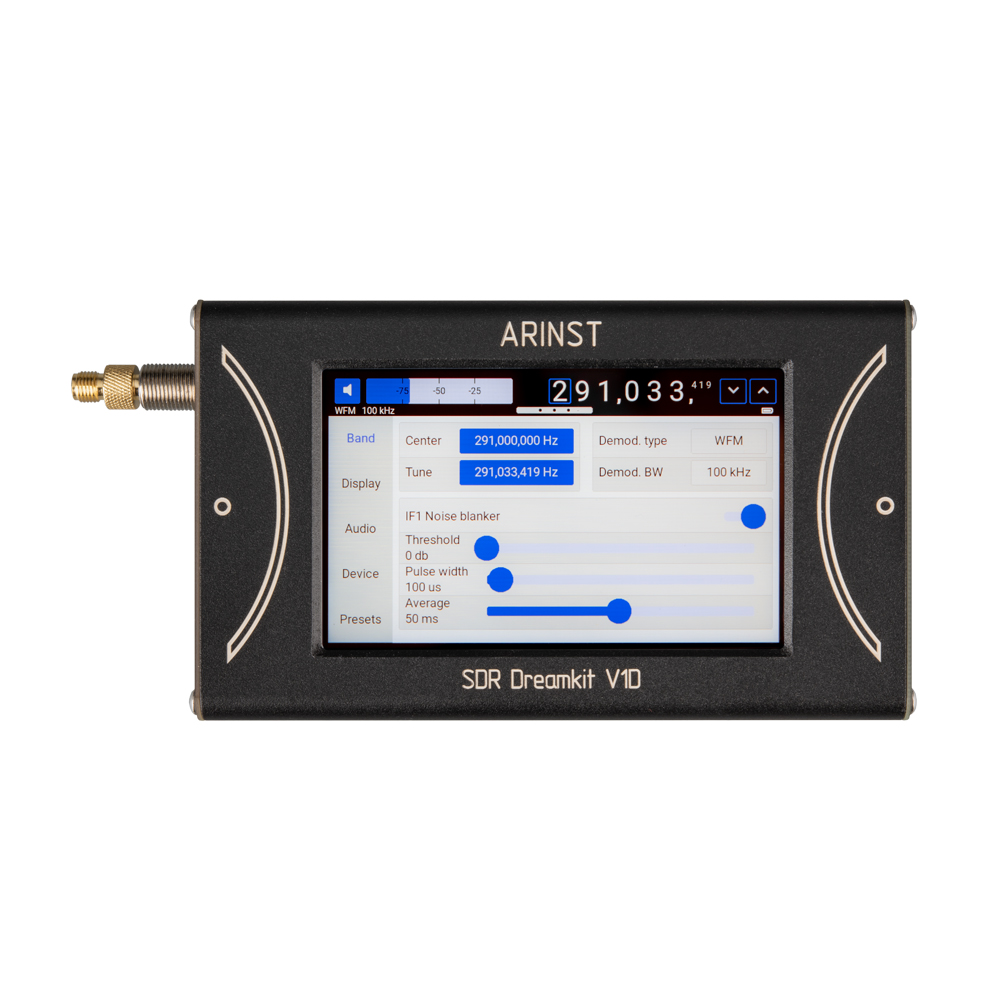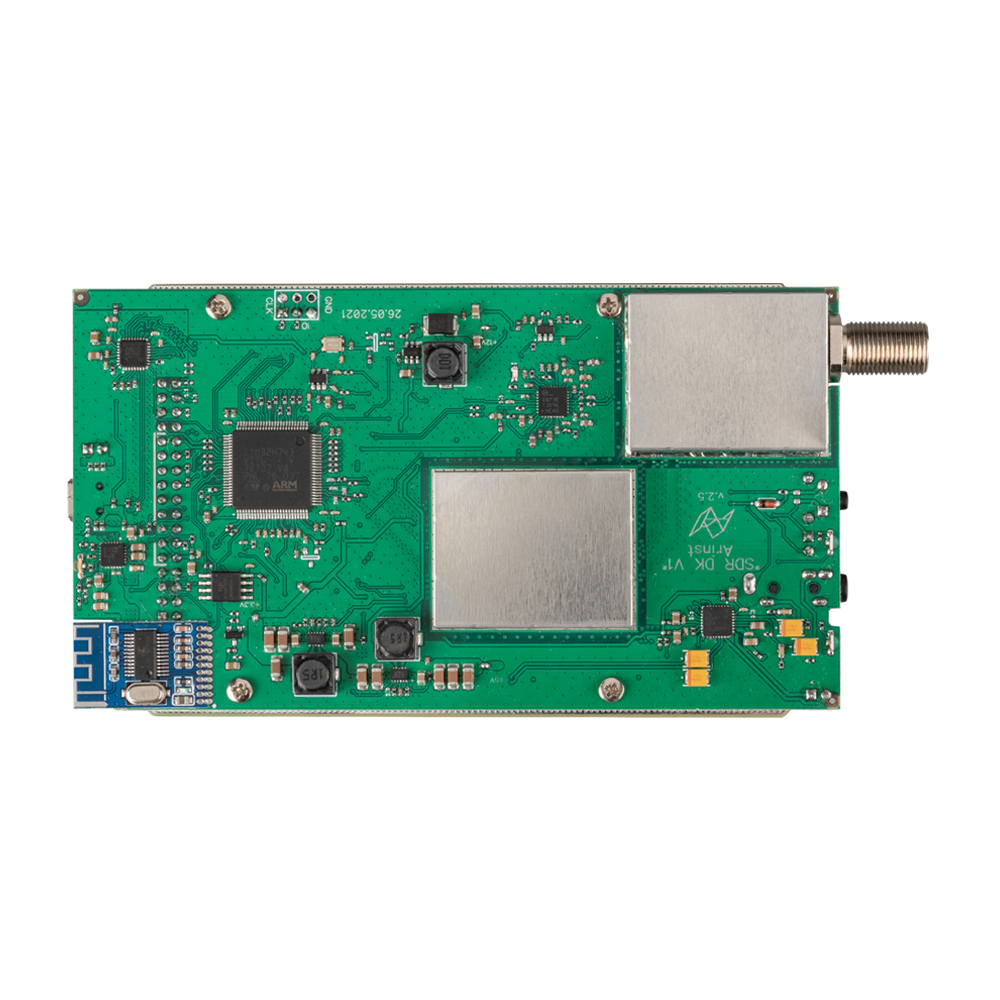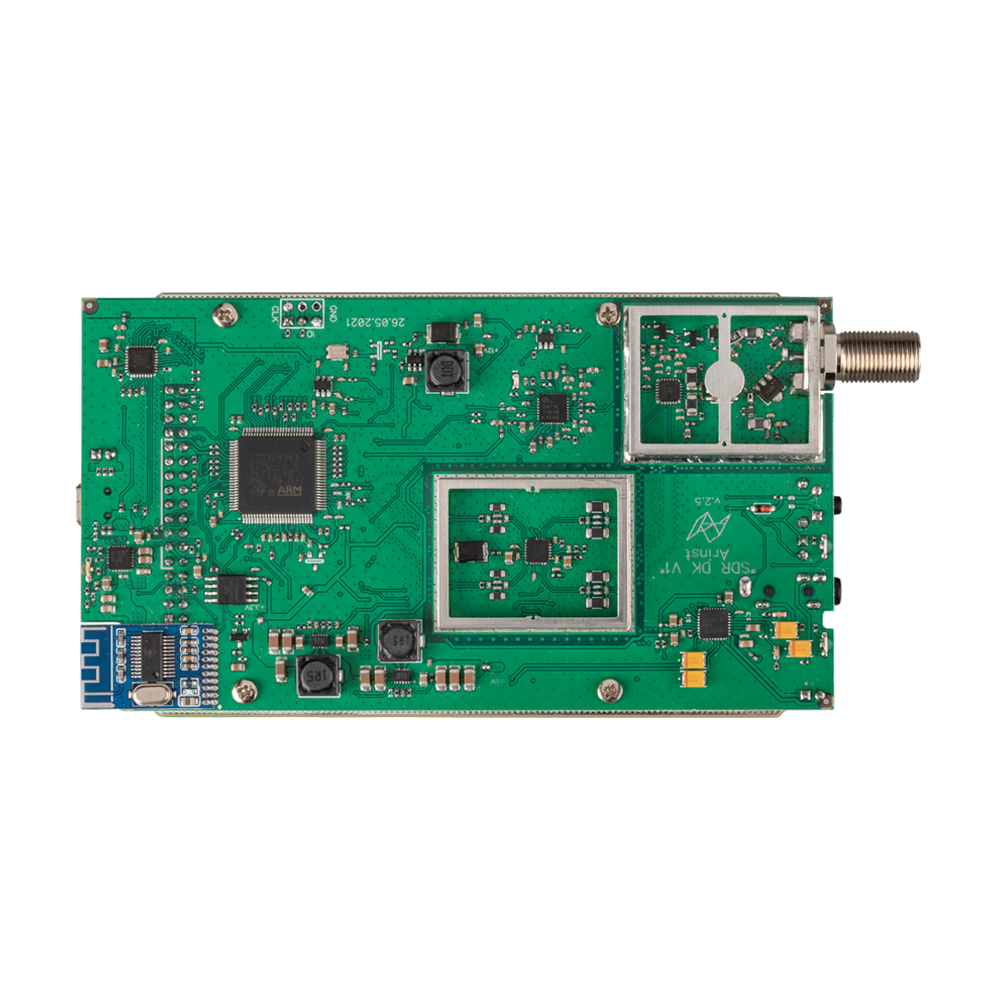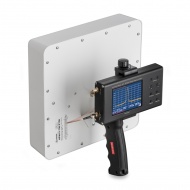Portable radio receiver ARINST SDR Dreamkit V1D (hereinafter referred to as receiver, device) is designed to receive, display and listen to radio signals with various types of analog modulation. The receiver body is made of aluminum and has compact dimensions. On the front of the case there is a touch screen with a diagonal of 4 inches and a resolution of 800x480 pixels. The display can be set to viewing up to 4 spectrum / waterfall plots for different bands. The receiver is built using SDR technology, which allows you to programmatically control the device settings. The signal processing and demodulation unit is completely implemented on a DSP-based microcontroller. The device can be used both in stand-alone mode and under PC control. The demodulated signal can be listened to through the built-in speaker, wired headphones, or via Bluetooth.
Advantages:
- Frequency range 1-3100 MHz
- Sampling rate of quadrature channels 6 MHz
- The maximum bandwidth is 5 MHz
- ADC resolution 16 bit
- Sensitivity 0.3 μV
- Demodulation WFM, WFM STEREO/RDS, NFM, AM, LSB, USB, DSB
- Powerful pre/post signal processing-AGC, pulse / spectral noise reduction, notch filters, equalizer.
- Simultaneous display of up to 4 bands in spectrum / waterfall mode
- HDSDR connection, continuous quadrature data transfer from ADC
- Possibility of supplying an internal voltage of 12 V to the input connector
- Memory for 40 presets
- Built-in speaker
- Connecting Bluetooth audio devices
- Screen 4 ", resolution 800x480 pixels
- Built-in 5000 mAh battery
For whom?
Portable radio receiver ARINST SDR Dreamkit V1D is designed for listening to the radio with simultaneous display of the spectrum, this allows you to assess the radio environment and tune in to the wave of interest. The device is made in a robust aluminum case with a built-in rechargeable battery, so it can be used both in the laboratory and in the field. The device will be useful to those who are engaged in amateur communication, radio monitoring, and repair of radio transmitting equipment. You can connect wired or Bluetooth headphones to the device, in addition, the device has a built-in 2W speaker. The instrument is equipped with a 4-inch resistive touchscreen display. Autonomous working time - 4 hours.
ARINST SDR Dreamkit V1D is used for:
-
search and listen to radio sessions on the amateur bands
-
listening to FM band radio stations
-
radio monitoring
-
tune radio transmitters
-
PC as SDR with 6 MHz sampling rate
-
educational process in universities
Attention! Do not switch the RF input connector when the charger is connected or the USB connection to the PC is connected. If these recommendations are not followed, the radio may fail.
Attention! It is strictly forbidden to connect a short-circuited load to the receiver input and supply an internal voltage to the RF connector. It is also not allowed to connect a short-circuited load to the input if the voltage to the RF connector is already applied. This will cause the radio receiver to fail!!!
You can download dynamic libraries for the operation of the device with the HDSDR program here
Differences ARINST SDR Dreamkit V1D from analogues:
- Wide operating frequency range, without "dips" (some analogues have dips in the range of 250-400 MHz)
- The presence of a large display and a capacious battery
- Display of the spectrum in a 5 MHz band (some popular analogues display less than 1 MHz), as well as continuous transmission of this band to a PC
- Simultaneous spectrum display and signal demodulation
| Тechnical characteristics ARINST SDR Dreamkit V1D | |||
| Working frequency range | 1-3100 MHz | ||
| Maximum sampling rate of quadrature channels | 6 MHz | ||
| Maximum width of the viewing band | 5 MHz | ||
| Minimum frequency resolution | 1 Hz | ||
| ADC resolution | 16 bit | ||
| Minimum detectable signal | -133 dBm | ||
| Sensitivity, less | 0,3 μV | ||
| Blocking dynamic range at ± 20kHz offset | 70-80 dB | ||
| Input impedance | 50 Ohm | ||
| Input standing wave ratio, no more | 2 (1,3 type.) | ||
| TCXO Reference Generator | 26 MHz ±0.5 ppm | ||
| Types of modulation | AM, LSB, USB, DSB, NFM, WFM/STEREO/RDS | ||
| Digital bands for broadband demodulation | 400, 300, 200, 100 kHz | ||
| Digital bands for narrowband demodulation | 20, 10, 8, 6, 4 kHz | ||
| Maximum DC Input Voltage | 12 V | ||
| Maximum input signal power supplied to the port | -35 dBm | ||
| Displayed charts | ■Baseband; ■IF1; ■IF2 (MPX); ■Waterfall; ■Audio; ■ RDS; ■ S-meter | ||
| Additional options | AGC, Noise reduction, Noise blanker, Notch filters, Equalizer | ||
| The number of memorized user settings | 40 | ||
| Audio out | Built-in speaker, headphones, Bluetooth | ||
| Built-in speaker maximum power | 2 W | ||
| Built-in audio codec resolution | 24 bit | ||
| Supply voltage for external devices | 12 V | ||
| Maximum current consumed by an external device connected to the RF IN connector | 150 mA | ||
| Screen diagonal | 4” | ||
| Screen type | touch resistive | ||
| Screen resolution | 800×480 | ||
| Maximum consumed current, no more | when charging the battery | ≤ 2 А1 | |
| when operating from USB with battery charging1 | ≤ 2 А | ||
| Battery capacity | 5000 mAh | ||
| Battery continuous operation time2 | ~ 4 h | ||
| Battery charging time3 | ~ 3,5 h | ||
| PC connection interface | HS USB 2.0 | ||
| Working temperature range | 0 … +40°С | ||
| Overall dimensions (L × W × H) | 150x81x27 mm | ||
| Weight | 0,4 kg | ||
1 If your PC is limited to the maximum current supplied to the USB port, the instrument will automatically limit the maximum charging current according to the current USB specification.
2 At an ambient temperature of plus 20 ± 5 ° C after a full charge of the battery. The display is on, the volume of the built-in speaker is at a medium level.
3 When connecting the device to a charger with an output current of at least 3A.
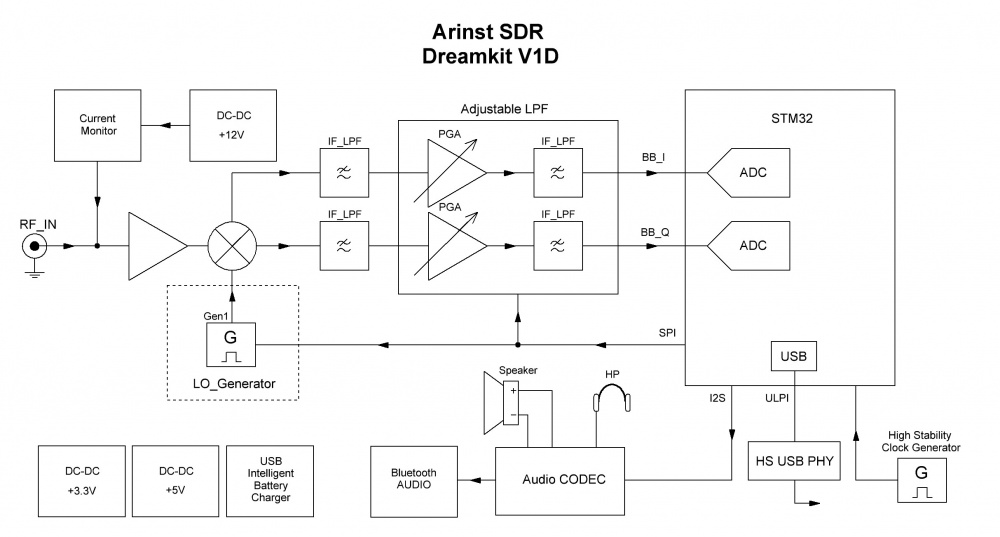
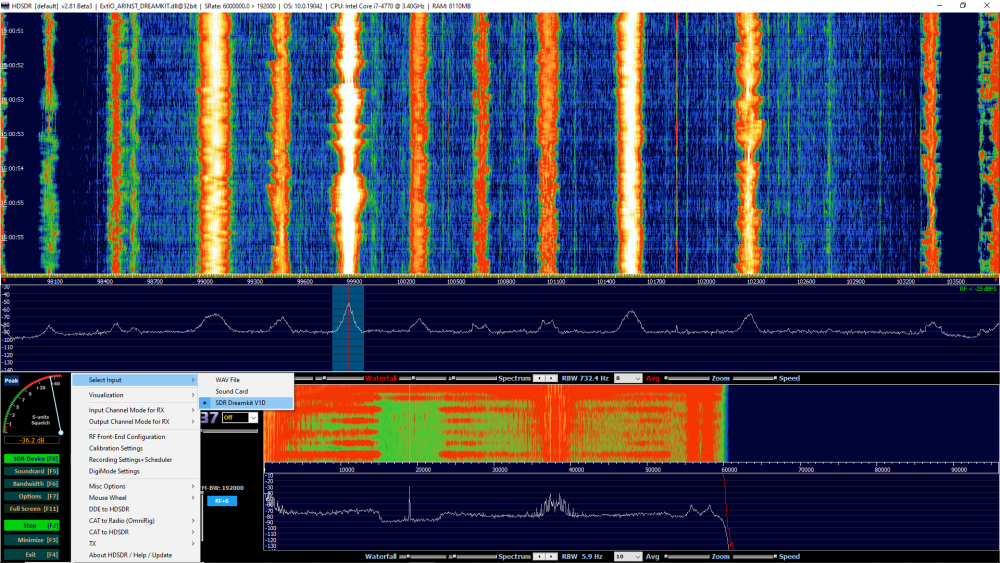
|
Dimensions (length , width , height ), mm
|
150
x
81
x
27
|
Equipment:
|
Position
|
Radio receiver
|
|
Adapter SMA(female)-SMA(female)
|
||
|
Cable 2xUSB2.0(male)-A – mini-USB
|
||
|
Package
|
||
|
Passport
|
||


